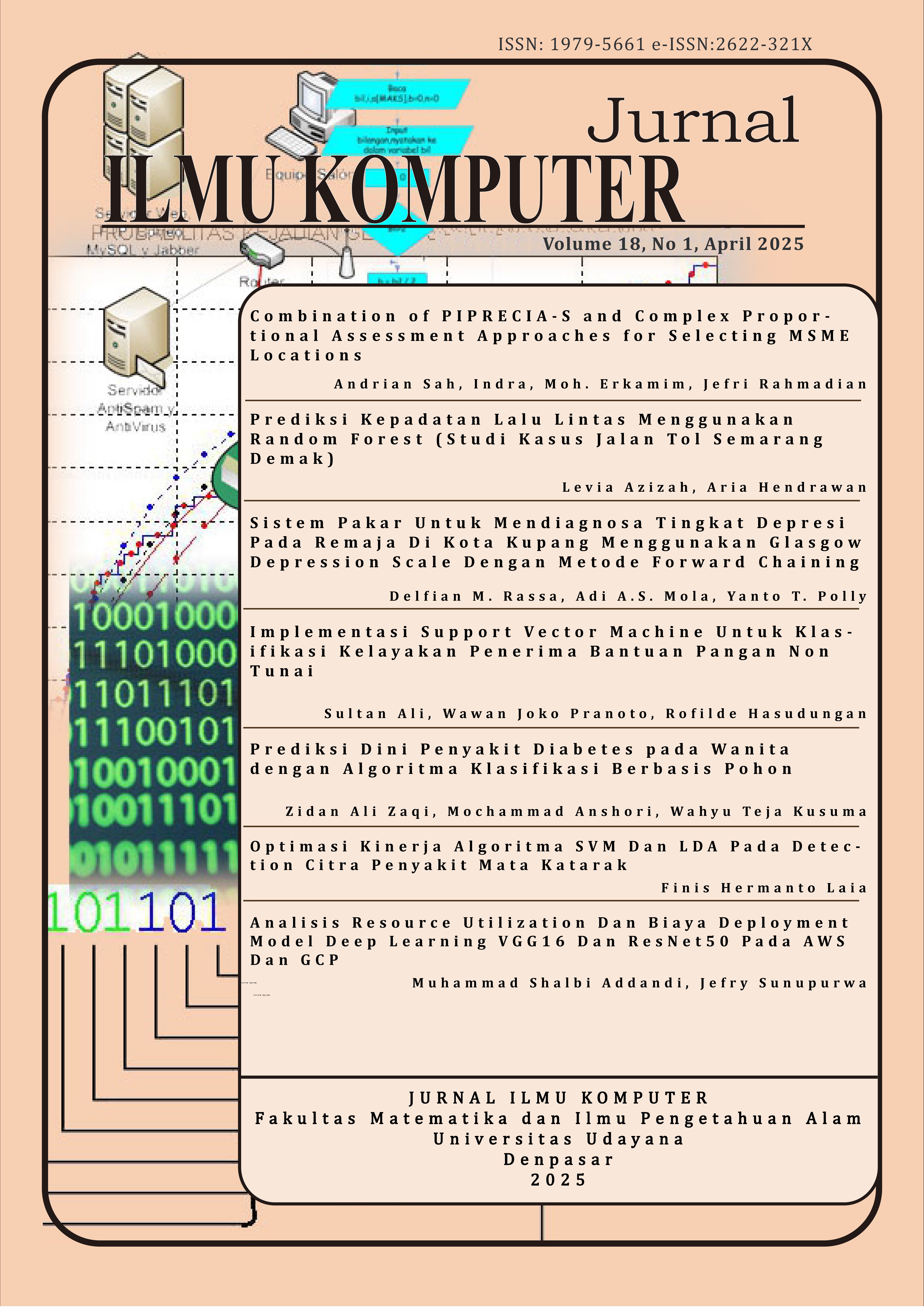Optimasi Kinerja Algoritma SVM Dan LDA Pada Detection Citra Penyakit Mata Katarak
Abstract
The eye is a visual organ that functions to capture light and convert it into signals that are processed by the brain to form visual perception. Cataracts are a condition in which the eye lens becomes cloudy, blocking light from entering, and causing visual impairment. Early detection of cataracts is essential to prevent or slow down vision loss. In this study, the performance optimization of the Support Vector Machine (SVM) and Linear Discriminant Analysis (LDA) algorithms was carried out in detecting cataracts from eye images using digital image processing techniques. Digital image processing is used to improve image quality, extract information, and perform classification with machine learning. LDA is used as a dimensionality reduction technique to improve classification efficiency, while SVM is used to find the optimal hyperplane that separates data with high accuracy. Several studies have combined LDA and SVM in the classification process to improve system performance. The results showed that SVM is superior to LDA in terms of accuracy, recall, and F1-score. The highest accuracy of SVM reached 95.98%, while LDA was only 90.20%. Both algorithms have 100% precision, but SVM recall is higher (92.0%) than LDA (79.3%). The F1-score of SVM is also better (90.9%) than LDA (84.0%), indicating an optimal balance between precision and recall. Thus, SVM is more recommended for cataract detection than LDA due to its higher accuracy and recall, while LDA is more suitable for classification tasks with lower complexityDownloads
Download data is not yet available.
Published
2025-04-29
How to Cite
HERMANTO, Finis.
Optimasi Kinerja Algoritma SVM Dan LDA Pada Detection Citra Penyakit Mata Katarak.
Jurnal Ilmu Komputer, [S.l.], v. 18, n. 1, p. 9, apr. 2025.
ISSN 2622-321X.
Available at: <https://ojs.unud.ac.id/index.php/jik/article/view/124156>. Date accessed: 14 dec. 2025.
doi: https://doi.org/10.24843/JIK.2025.v18.i01.p06.
Section
Articles





 Submissions
Submissions






